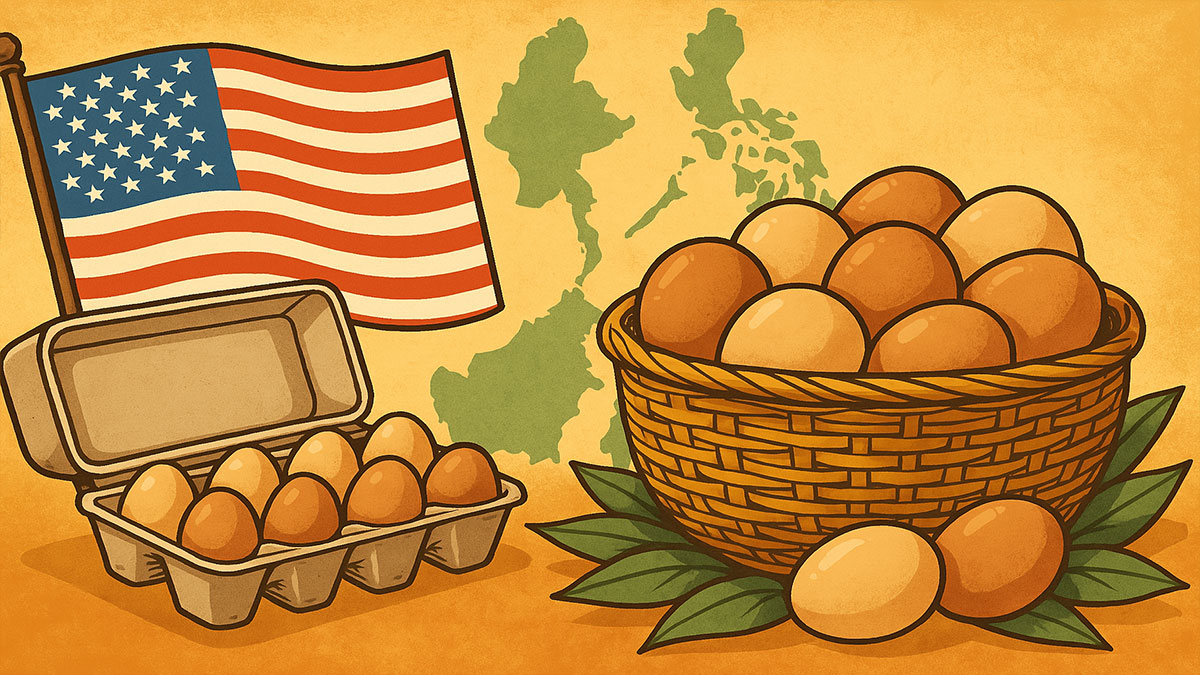
The United States is in a scramble as a record outbreak of bird flu decimates poultry stocks across the country. Egg prices are soaring, with some projections estimating a 41 per cent increase in 2025, and leaving American households reeling.
While Washington is looking abroad for relief, current import sources – Canada, Taiwan, Lithuania and Turkey – may not be enough to stabilise prices of what should be an affordable staple grocery item. Enter Southeast Asia: a region with vast agricultural potential, yet one that remains largely absent from the US’ solution to its egg problem.
Why hasn’t America turned to Asean for egg imports? And more importantly, could this crisis provide the Association of Southeast Asian Nations with an opportunity to become a more strategic agricultural supplier to the world’s largest economy?
The US is literally facing a crisis at the breakfast table. Decision-makers must understand the importance of diversified sources of eggs.
For the average American consumer, an egg shortage is no trivial matter. Whether for breakfast, baking or industrial food production, eggs are essential. Yet, when supply chains are fragile, price shocks can ripple through the economy, exacerbating inflationary pressures.
Historically, the US has been largely self-sufficient in egg production. However, the avian flu outbreak has led to the culling of millions of chickens, forcing supermarkets to ration supplies. The government has had little choice but to expand its import options.
The Wall Street Journal reports that US policymakers are actively considering new trade arrangements to cushion domestic prices. But instead of looking eastward towards Southeast Asia, Washington has focused on existing trade partners, particularly in Europe and North America.
This is not just a matter of preference – it’s also about regulations. The US Department of Agriculture (USDA) enforces strict health and safety standards on egg imports, making it difficult for new suppliers to enter the market.
But this presents an interesting challenge. If Asean can meet these requirements, could it position itself as a viable, long-term supplier? Asean is no stranger to the egg trade. The region is an agricultural sleeping giant. Countries like Thailand, Vietnam and Indonesia boast robust poultry industries, while Malaysia and the Philippines have long been major regional exporters.
Singapore, too, has recognised this potential, recently approving egg imports from Indonesia, making it the city state’s 18th source of eggs. Yet, Asean countries have yet to break into the US market in a significant way. This is surprising, given that Asean has been actively strengthening its agricultural trade ties with China, Japan and South Korea.
The Comprehensive and Progressive Agreement for Trans-Pacific Partnership (CPTPP) and the Regional Comprehensive Economic Partnership (RCEP) have given the region a platform to expand its agricultural exports. So why not to the US?
The primary barrier is regulatory. The USDA requires extensive quality control to ensure that imported eggs meet American health standards. Many Asean poultry farms, while capable of mass production, still face challenges in obtaining USDA certification.
Moreover, logistics play a role. Unlike Canada or Mexico, which can easily transport eggs overland, Asean nations would need to rely on maritime or air freight, increasing costs. Eggs are perishable, and without seamless cold-chain infrastructure, long-haul exports become a logistical challenge. This is a problem which can be overcome with careful packaging.
Beyond economics, there’s a geopolitical layer to this equation. The US has long treated Asean as a strategic partner in its Indo-Pacific strategy, particularly in countering China’s influence. Washington has been keen on expanding trade ties with the region, if focused on chips. When it comes to agriculture, the relationship remains underdeveloped. This stands in contrast to China, which has aggressively secured Asean’s agricultural output through long-term trade agreements.
If the US were to open up its market to Asean’s eggs, it would not only help American consumers but also strengthen economic ties with the region. In a world increasingly defined by supply chain resilience and food security, diversification should be a priority for Washington.
For Asean to capitalise on this opportunity, governments and poultry producers must take decisive action. To begin with, focus on regulatory compliance. Asean exporters must align with USDA health and safety requirements. This means investing in certification programmes and modernising poultry farms to meet international standards.
Second, infrastructure development such as cold-chain logistics needs improvement. Given the perishable nature of eggs, Asean nations must build better storage and transport facilities to ensure freshness upon arrival in the US.
Third, Asean governments should actively negotiate agricultural trade deals with the US. If Canada and Lithuania can access the American egg market, there’s no reason Asean cannot.
Forth, Asean must position itself as a premium, reliable supplier. Just as New Zealand has done with dairy and Australia with beef, Asean eggs could be marketed as high-quality, disease-free and sustainable.
The US egg shortage is more than just a supply chain problem – it’s an opportunity for Asean to step up as a global agricultural powerhouse. While bureaucratic hurdles remain, the long-term benefits could be significant. If Asean countries can overcome regulatory and logistical challenges, they could secure a foothold in one of the world’s most lucrative food markets.
In an era where food security is as much about geopolitics as it is about economics, Asean must not let this moment pass. The question is: can policymakers in the US and Southeast Asia crack open the possibilities?
Article was first published at the South China Morning Post website on 9 March 2025.
Last Update: 06/04/2025